Since the discovery of the first exoplanets in the 1990s, all manner of the weirdest and most wonderful worlds have been found orbiting stars beyond our Solar System.
Who wouldn’t want to leave Earth for the promise of an interplanetary trip to a strange exoplanet?
With thousands confirmed and the number of exoplanets discovered growing daily, you may get lucky: about half of the Sun-like stars out there are thought to have the potential to host life.
Discover our pick of the strangest things in our Solar System

That’s about 300 million potentially habitable worlds in our galaxy (for more on this, find out what makes a planet habitable).
Don’t pack your bags just yet though – as these weirdest exoplanets show, you may be in for the holiday from hell.
And, with a wealth of new exoplanet-hunting missions in the pipeline, there could be plenty more strange worlds discovered over the coming years.
You'll find exoplanets are named with a series of letters and numbers. Find out what this means in our guide on how exoplanets are named.
TIC 241249530 b and its eccentric orbit

Exoplanet TIC 241249530 b isn't necessarily weird in itself, but its orbit definitely is.
This planet has one of the most stretched-out orbits ever seen.
The eccentric – or egg-shaped – orbit brings the planet 10 times closer to its star than Mercury gets to our Sun, then out as far as Earth is from the Sun.
This extreme orbit could also be causing TIC 241249530 b to become a ‘hot Jupiter'.
But that's not all. The planet also orbits in the opposite direction to its star’s rotation, whereas almost every planet known, including those in our Solar System, orbits in the same direction as its star.
HD 189773b – where it rains glass sideways

This nightmare world is only 64 lightyears away and the closest ‘hot Jupiter’ to Earth. It may look like a gorgeous deep-blue marble floating serenely in space, but if you had the misfortune to visit this massive gas giant, you’d soon regret it.
As well as being spun furiously by winds blowing at 8,700 km/h, you’d be cut to shreds by glass rain. The planet’s delightful blue colour is the reflection of silicate in its atmosphere – silicate that, when heated by the planet’s deathly 1300°C temperature, forms grains of glass.
TOI 849 b – a world stripped bare
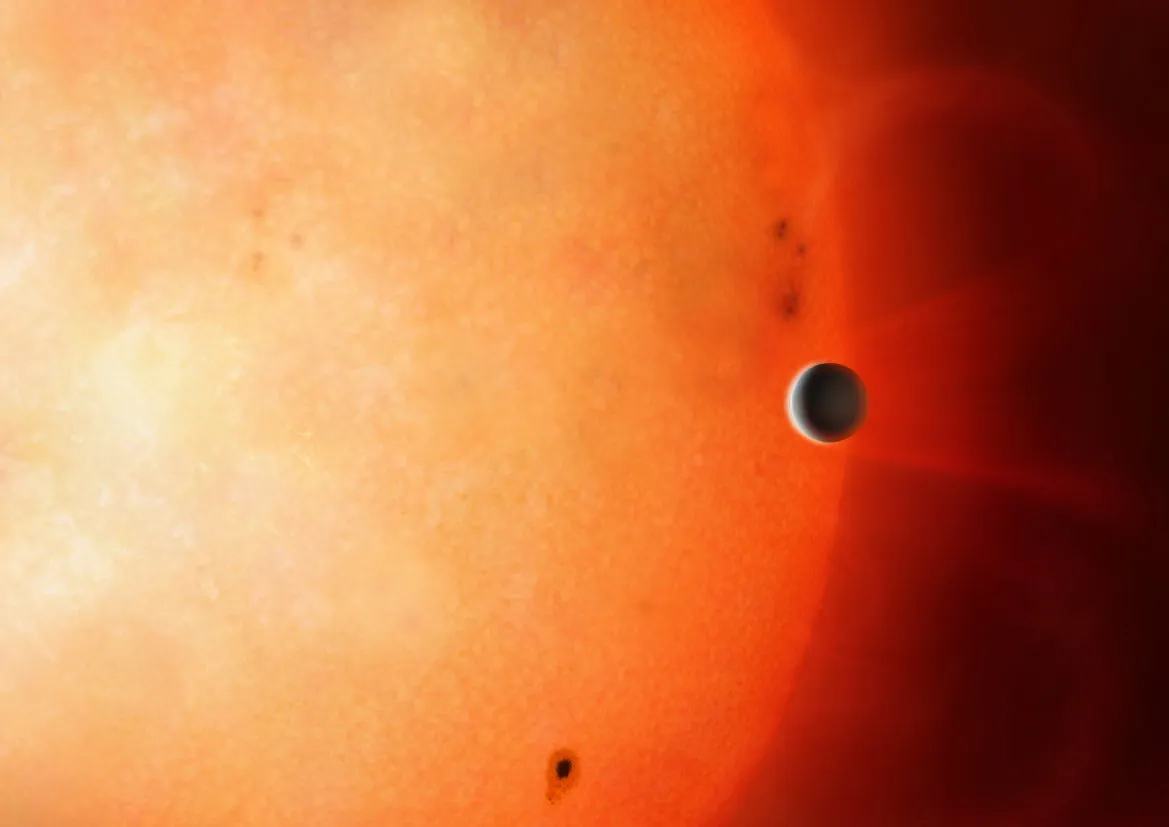
Discovered in 2020 by NASA’s Transiting Exoplanet Survey Satellite (TESS), it’s no fun at all on TOI 849 b. This exoplanet orbits so tightly to its star that a year passes in 18 hours. Don’t bother with constant birthday parties though, as there’s no atmosphere and the 1530°C heat would melt the cake.
What makes TOI 849 b on of the weirdest exoplanets discovered is its strangely hybrid nature. While it’s around the size of gas giant Neptune, it’s dense and rocky not gaseous – in fact, it’s the largest rocky world yet discovered, 40 times as massive as Earth. It may even be the first Chthonian planet to be detected: the exposed remnant core of a gas giant that has had its atmosphere blasted away.
WASP-12b – puffed up planet in a death spiral
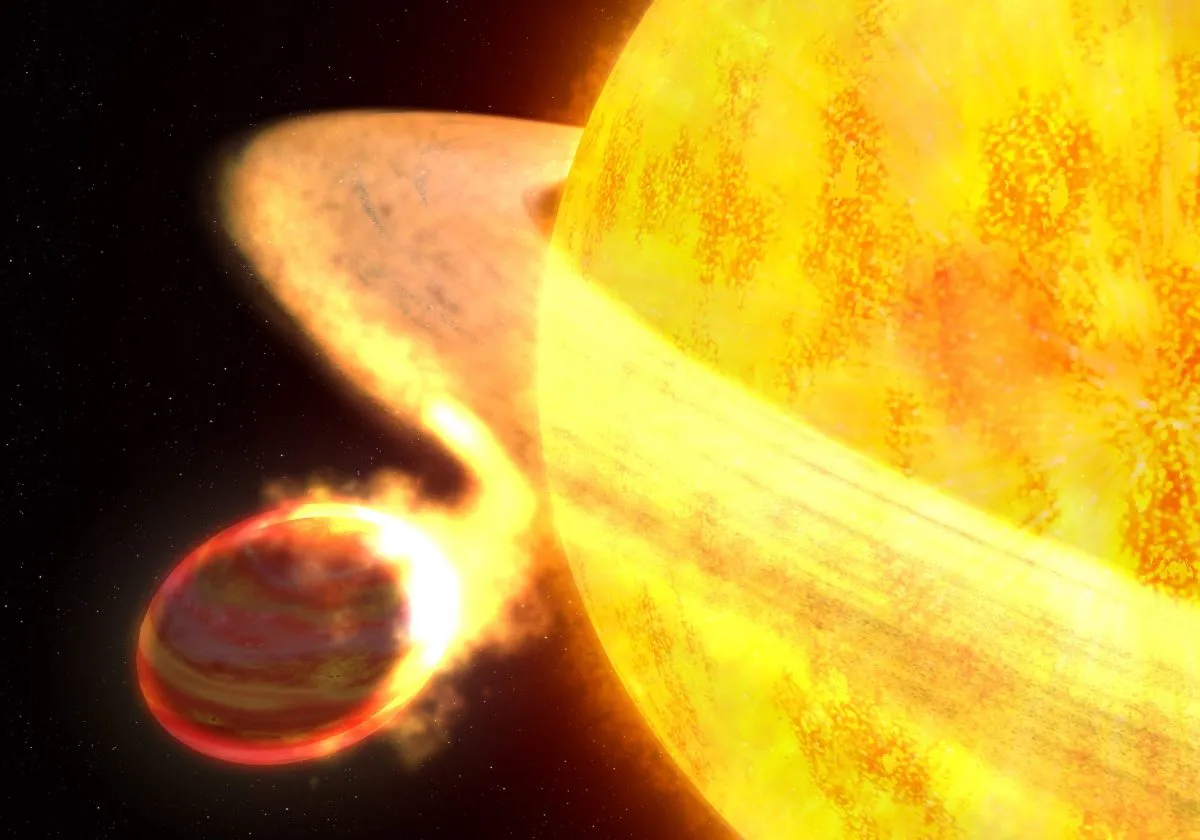
Just three million or so years from its eventual fiery demise, WASP-12b is spiralling inexorably inwards towards doom at the hands of its yellow dwarf host star.
Studies shown the planet, located 600 lightyears away in the Auriga constellation, is now so close that it’s begun wobbling and distorting under the spell of the star’s gravity, while intense stellar radiation has caused it to swell up so much that it’s falling apart.
Read more about exoplanet WASP-12b
Rogue worlds: exoplanets on the loose
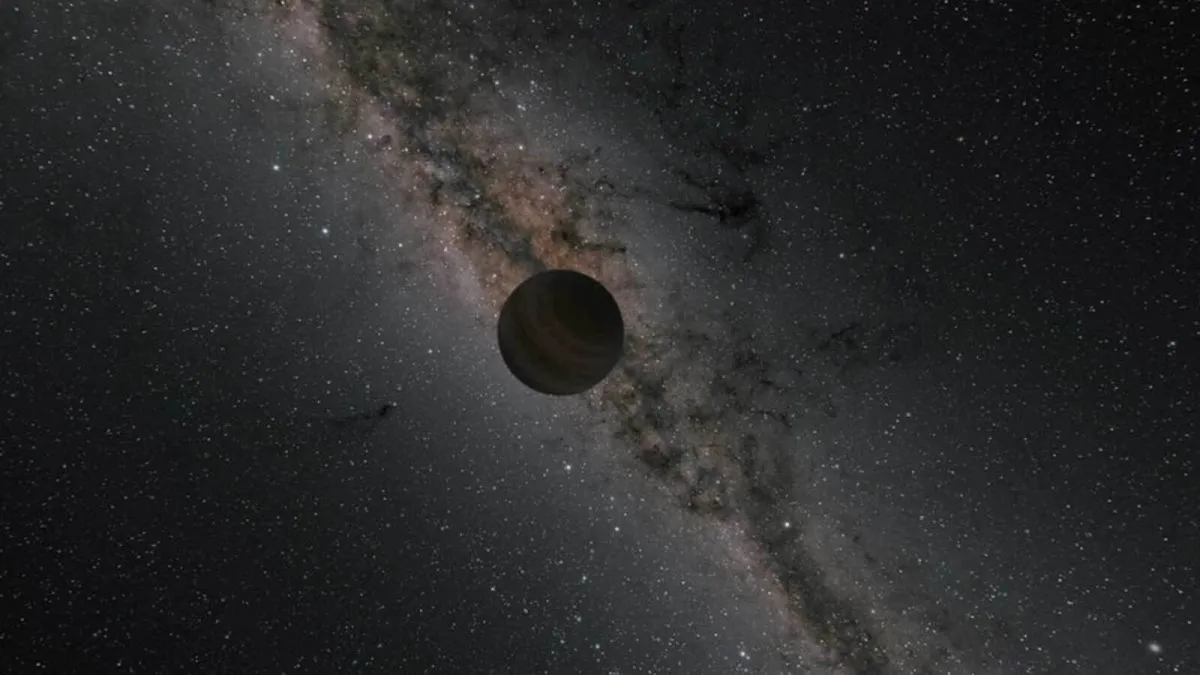
Many exoplanets may be scary and inhospitable, and they may come in different sizes, colours and densities, but at least they all reliably do one thing: orbit a star. Or do they? While most planets are locked in orbit around their sun, some worlds are actually roaming the galaxy untethered. With no parent star to light and warm them, life is dark and cold on these nomads adrift in the vastness of space.
Catching sight of these hard-to-detect ‘rogue planets’ will be one of the tasks for NASA’s Nancy Grace Roman Space Telescope, coming online around 2025. One such planet is OT44, located 550 lightyears away in the constellation Chamaeleon. This cosmic wanderer is eleven times more massive than Jupiter and thought to have a circumstellar disc of dust, rock and ice.
The recently identified OGLE-2016-BLG-1928 is another. Likely smaller than Earth, it’s one of the lowest-mass objects ever found using microlensing techniques.
55 Cancri e – a diamond planet
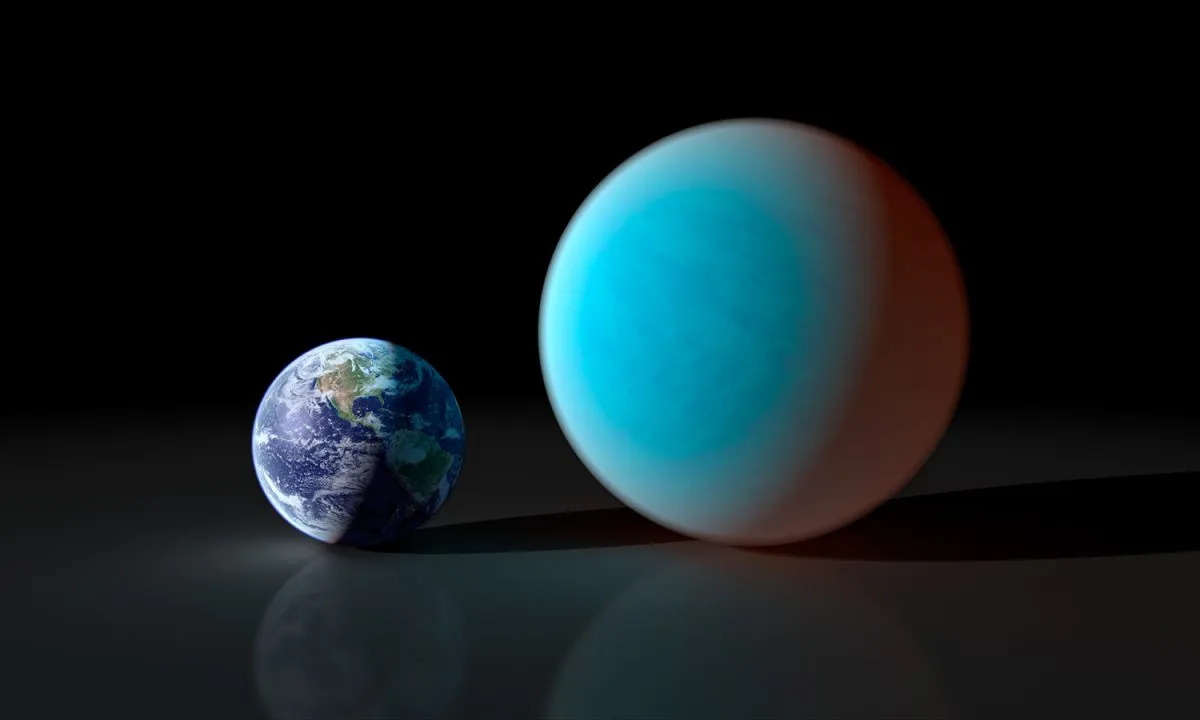
A planet made of diamonds has to be one of the weirdest exoplanets discovered. This exoplanet in orbit around Sun-like host star 55 Cancri A may be a real gem. The first super-Earth discovered around a main sequence star, it was thought to be so abundant in carbon that, thanks to immense pressure and 2,700°C temperatures, its interior was made of diamond.
More recent research has taken the shine off the diamond theory, revealing less carbon than previously thought, but the nature of 55 Cancri e remains enigmatic and hotly contested.
Read more about exoplanet 55 Cancri e
TrES-2b – the darkest exoplanet
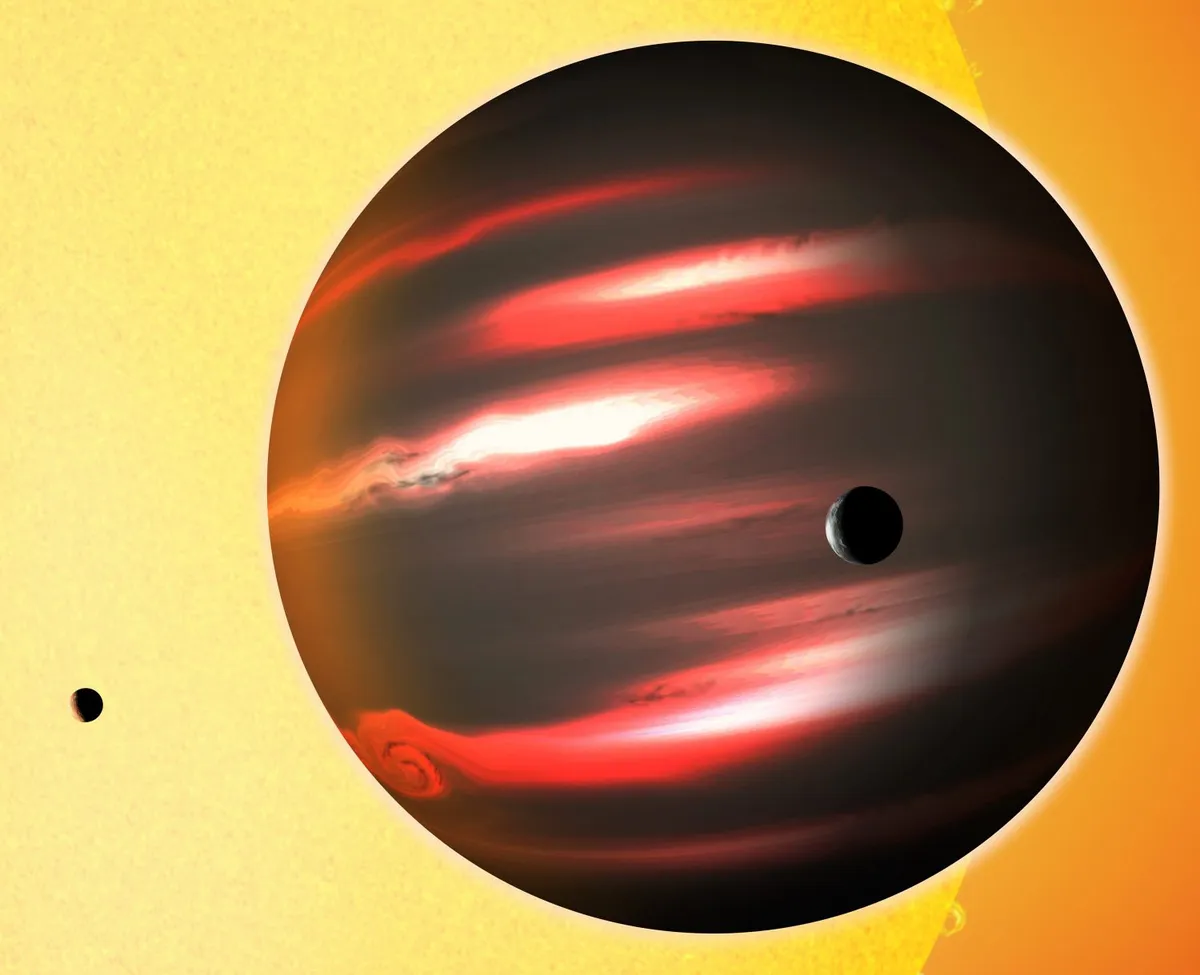
“It's so…black! You can hardly make out its shape…light just seems to fall into it!” Hitchhiker’s’ Ford Prefect may have been describing Hotblack Desiato’s limoship, but he could just as easily have been talking about TrES-2b. Identified by NASA’s Kepler Space Telescope in 2011, it’s the darkest known exoplanet, reflecting less than 1% of any light that hits it.
TrES-2b orbits a star some 750 lightyears away in the direction of the constellation Draco and is the darkest planet or moon ever discovered. “It’s darker than the blackest lump of coal, than dark acrylic paint you might paint with. It’s just ridiculous how dark this planet is,” said study lead-author David Kipping from the Harvard-Smithsonian Center for Astrophysics.
KELT-9b – the hottest exoplanet
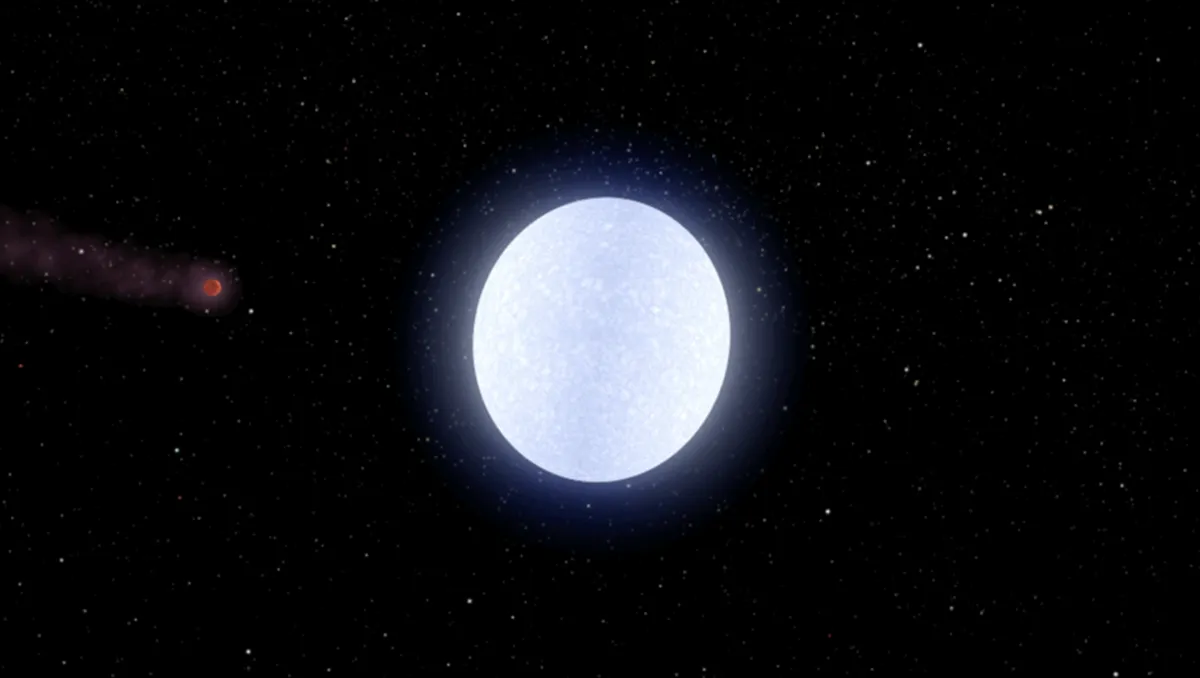
This list is all about the weirdest exoplanets, but what about the hottest? Ultra-hot Jupiter-type exoplanet KELT-9b is so scorching that it’s even hotter than many stars. It orbits so close to its star that its surface sizzles at 4,300°C – so hot it has atomic iron and titanium in its atmosphere – and a year lasts less than a day and a half.
Using data from the Spitzer Space Telescope, researchers have found that the extreme temperatures on the planet’s dayside cause molecules of hydrogen gas to tear apart, only to recombine when they flow to the relatively cooler eternal nightside, before being torn apart once more when they move back into the furnace.
Read more about exoplanet KELT-9b
HR 5183b – the planet with the strangest orbit
HR 5183b is in no hurry to orbit its star. Discovered in 2019, it’s a galumphing giant, three times more massive than our biggest planet, Jupiter, that ambles round in a leisurely 74 years (far more than Saturn’s 29 Earth years, but close to Uranus’s 84 years).
What’s strange, though, is its bizarre orbit, which sees it loitering on the outer reaches of its system before slingshotting into the centre, passing a hair’s breadth from its host star before peeling away again. This mad behaviour has earned it the nickname the ‘whiplash planet’. It’s also been likened to a wrecking ball for its likely devastating effect on any other planets in the system that are trying to quietly orbit in a more orthodox fashion.
K2-18b – where a swim may vaporise you
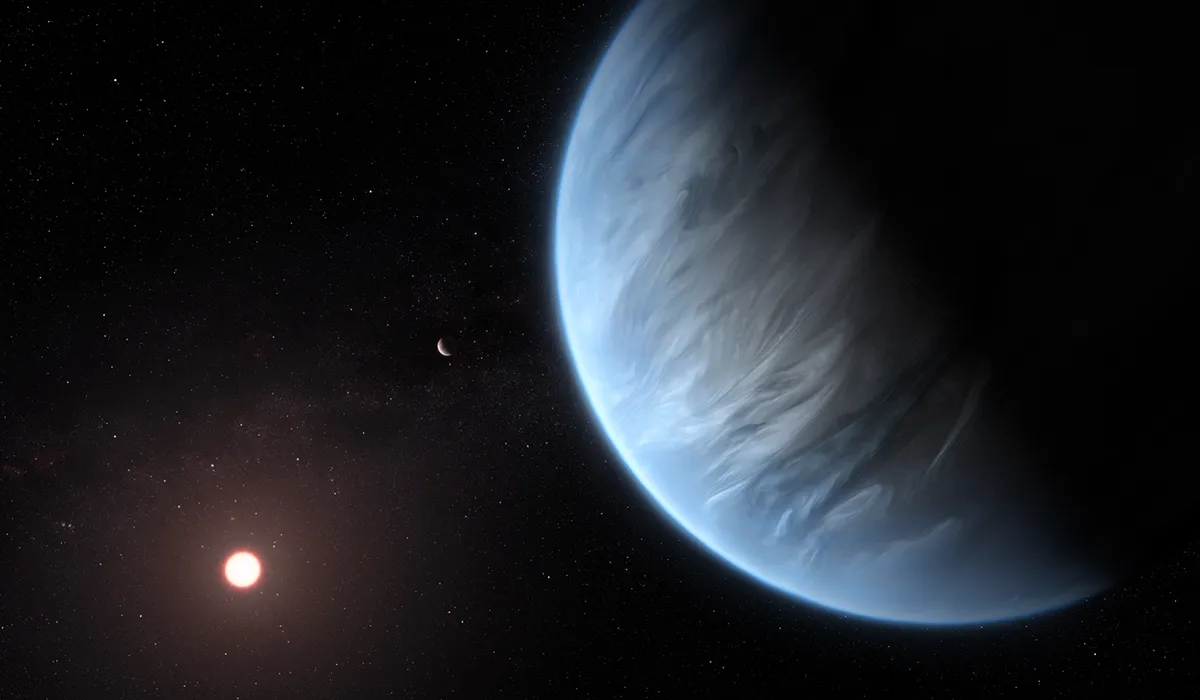
K2-18b, twice the radius and eight times the mass of Earth, has been a top contender for an Earth-like planet for years, so there was huge excitement when it was announced in 2019 that water had been discovered in K2-18b's atmosphere. For the first time, we’d found a rocky planet orbiting in the habitable zone of its star, in which liquid water could potentially pool on the surface.
Before we could dream of luxuriating in exotic oceans, though, came the view that K2-18b may be more like the far less friendly mini-Neptunes – planets with a thick hydrogen atmosphere, a watery layer and a rocky iron core, where temperatures and pressures are far too high to support life.
New research suggests K2-18b could hover in a third zone: planets that looks like a gaseous mini-Neptune but are actually rocky planets covered in superheated, super-compressed seas, where the water exists somewhere on the threshold between liquid and gas, and is topped by a steamy water vapour atmosphere. Sadly, we have to put our swimming costumes away for now.
Read more about exoplanet K2-18b
HAT-P-7b - ultra-hot Jupiter, dark as charcoal with a sapphire sky
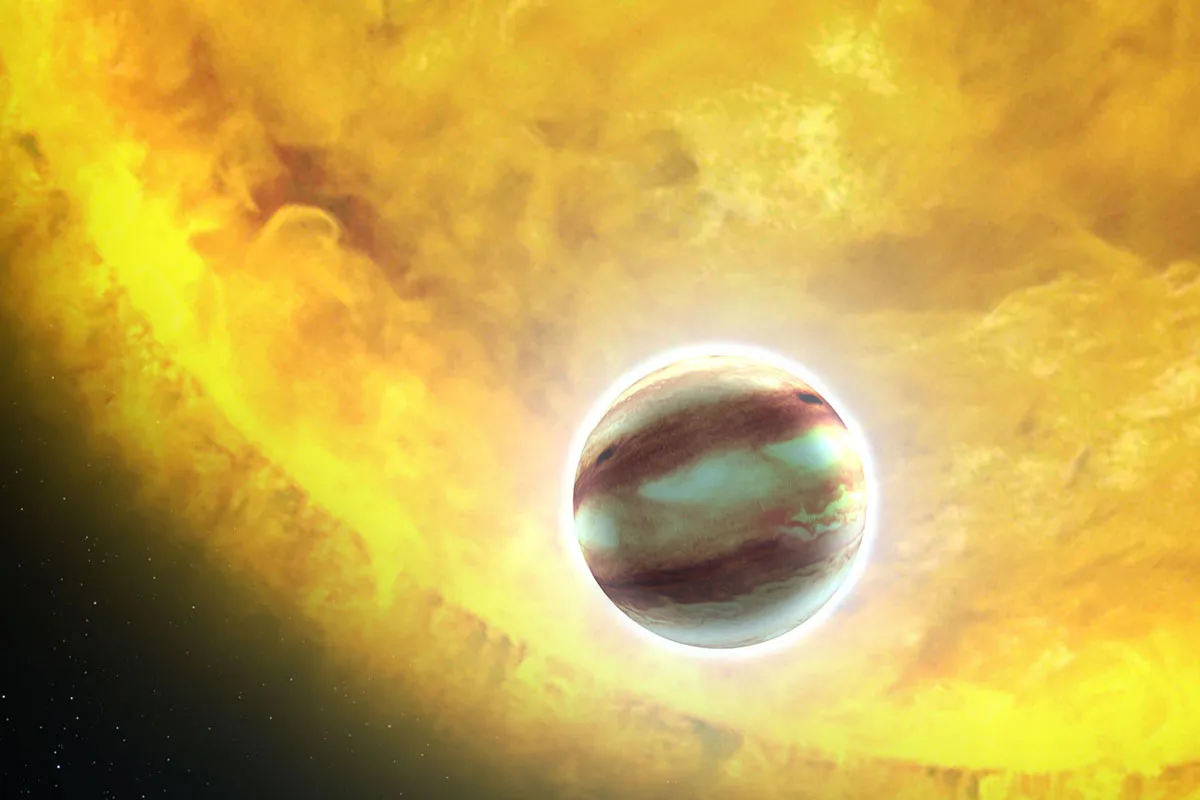
HAT-P-7b is larger than Jupiter and an orbital plane titled 108° relative to its host star, meaning it's almost in a polar orbit.
It orbits the star so close that a year on this world is less than 3 days. In fact, it's over 20 times closer to the star than Earth is to the Sun.
During daytime on HAT-P-7b, temperatures reach over 2,200°C - that's hotter than many stars. Accordingly, the exoplanet is of a kind known as an 'ultra-hot Jupiter'.
But it's also one of the darkest known worlds, about as dark as charcoal, absorbing over 97% of visible light that shines onto it.
Read more about HAT-P-7b
HD110067 – a system in perfect balance

OK, so this isn't about a single strange planet; rather an interesting discovery around star HD11006.
The exoplanet around HD110067 are orbiting in what’s known as an orbital resonance.
The pattern is striking: the nearest planet to the star takes 9.11 days to orbit, then the next one takes 13.67 days, which is about 1.5 times that of the inner planet.
The furthest planet from the star orbits in 20.52 days, 1.5 times the orbital time of the middle planet.
"By establishing this pattern of planet orbits, we were able to predict other orbits of planets we hadn’t yet detected," says Thomas Wilson from the University of Warwick.
"From this we lined up previously unexplained dips in starlight observed by CHEOPS and discovered three additional planets with longer orbits."
Find out more about HD110067
WASP-107 b, the puffy marshmallow planet

WASP-107 b is one of the least dense exoplanets ever discovered, to the extent that its interior has been likened to a toasted marshmallow.
This 'warm Neptune' exoplanet seems to defy theories of planet formation and evolution.
It's over 3/4 the volume of Jupiter in our Solar System and less than 1/10th the mass, leaving astronomers puzzled as to what could be causing WASP-107 b to be so puffed-out.
That is, until data from Webb and Hubble were used to learn more about the gases present and what could be causing the planet's internal heating.
Find out more about WASP-107 b
Kepler-452b – a planet eerily like Earth

Kepler-452b makes our list of weirdest exoplanets because... it seems so familiar.
Known as an 'Earth 2.0', Kepler-452b was announced in July 2015 and made headlines because it's so like Earth, and its host star is so like our Sun.
And it's only 1,400 lightyears away: a veritable stone's throw, in astronomical terms.
Here are the stats.
Kepler-452b is 60% larger than Earth, and could be rocky.
It orbits the right distance from its star for liquid water to pool on its surface, and takes just 385 days to do so: only 5% longer than Earth's orbit around the Sun.
Kepler-452b's orbital track is only 5% farther from its star than Earth is from the Sun.
And its Sun-like star is 6 billion years old, just 1.5 billion years older than our Sun, has a similar temperature, is only 20% brighter and 10% larger.
HIP 67522 b – a week-long year and a deathwish

HIP 67522 b is a giant exoplanet located 400 lightyears away that has an extremely tight orbit around its young host star.
Its orbit is so short, a year on this exoplanet lasts the same time as a week on Earth.
And it's also causing flares to erupt from the host star that are blasting the planet with radiation.
This is causing it to rapidly inflate, so that it's about the size of Jupiter, despite being only 5% of Jupiter's mass.
What are favourite weirdest exoplanets? Let us know by getting in touch via contactus@skyatnightmagazine.com or on Facebook, Twitter and Instagram.
Click here to read about the strange exoplanet that looks like an 'eyeball'


